Welcome to this blog article, on which we will discuss the different traditional Japanese patterns, they are very numerous and each has a different meaning, so we will see together what place they occupy in Japanese and more generally Asian culture.
Do you want to know more about the meaning of japanese patterns ? Don't move, you're in the right place!
To create so many different patterns, the inhabitants of the land of the rising sun draw a lot of inspiration from nature, these patterns are a real piece of history and tradition in Japanese culture, they appeared between the 8th and 11th century during the Heian period and are called "Wagara". For the Japanese, you are sitting are a truly universal language, they are meticulously chosen according to personality traits and are a perfect way to immerse yourself in Japanese culture.
But then where can we find these traditional Japanese patterns? In reality, they are present almost everywhere, meven if in the past Japanese patterns were mainly present on traditional outfits, over the years Japan has become somewhat westernized, Tokyo youth now opt for a slightly more modern style and abandon traditional outfits like Kimonos and the Yucatas. The latter still obviously remain displayed by the oldest ones, however, Japanese motifs have greatly expanded in terms of target, since we can now find them on Japanese tableware, fabrics, small napkins also called tenugui, and more generally on many Japanese objects.
If you are looking for the meaning of a particular pattern, here is a short summary to help you find your way more easily in this article:
- Japanese floral patterns
- Geometric Japanese patterns
- Japanese patterns with animals
- Japanese patterns inspired by nature
- Japanese patterns inspired by objects
Here we go, at the end of this article the Japanese patterns and their meaning will no longer have a single secret for you!
JAPANESE FLORAL PATTERNS
In Japan each flower has its meaning and its symbol, from the lotus to the sakura flower, without forgetting the chrysanthemum, the flowers will know how to express themselves for you! The Japanese word Hanakotoba means "language of flowers", let's discover together now the japanese flower patterns the most popular within the Asian tradition.
SAKURA

The flower of Sakura, also known as Cherry flower, is here iconic flower of Japan. Its hatching marks the beginning of spring, it arouses such admiration in Japanese culture, that the Japanese even decided to create a festival in its honor: the Hanami. It mainly symbolizes the ephemeral nature of beauty and we find it particularly on the traditional Japanese fabrics, although in recent decades the cherry blossom motif has still managed to carve out a place for itself in the fashion world, both in modern clothing and traditional outfits.
KARAKUSA

This japanese arabesque pattern represents the evolution of a plant growing, we could compare this motif to ivy, in fact we can observe that the plant represented here (admittedly abstractly), continues to develop and spread. It's a very old Japanese pattern which was introduced from China during the Nara period, initially, the motif karakusa was only decorative, but over the years it has gained popularity to today symbolize the prosperity and the longevity, like a tree of life.
BOW

We mentioned it a little above: the chrysanthemum, from its Japanese name bow is a true symbol of Japan, if not the number one! Today he is theemblem of the imperial family and mainly symbolizes the longevity and the rejuvenation. It is found in particular on official documents such as Japanese passports or even 50 yen coins. Just as the blossoming of sakura flowers represents the arrival of spring, the blossoming of chrysanthemums represents the arrival of autumn. THE motif kiku was imported from China during the Nara period (710-793).
BOTAN

In Japan, the peony has two nicknames "the queen of flowers" but also "flower of wealth and honor". She is simply the symbol of the feminine ideal but also has many other meanings: bravery, the chance or even the right one fortune, all these symbols therefore give a lot of reason to the Japanese to proudly display the motif bots on their clothing or on their traditional fabric. The red peony flower is particularly appreciated in the land of the rising sun, it is often found on traditional tattoos, you should also know that there are many legends, each more fascinating than the last, about this wonderful flower.
BREATH

The ume pattern represents the plum blossom, in fact, in Japan, the plum trees are in flower between January and March while the cold of winter is in full swing, this is the particularity of this tree popular in Japan. So you are probably wondering what this flower could possibly symbolize? Although much less popular than the sakura flower for example, the plum blossom still has quite a few virtues and symbolizes, among other things, the vitality, hope and the renewal. The flower of peace, from its nickname, is pink and white, eIt is often worn on the ear by Japanese women and will bring out your feminine side while guaranteeing you an extraordinary elegance.
TSUBAKI

The camellia flower is very popular in Japan, it begins to flower at the end of winter and it is very often used during religious ceremonies because it represents the divinity. There are many different varieties of the camellia flower with multiple symbols depending on its color. So motif tsubaki we can see that the center of all camellia flowers is yellow, this is the peculiarity of this pretty japanese flower. Overall, the camellia flower represents love, but if we go into a little detail we can clarify our point by saying that the color yellow represents the wait, the white color represents the desire, and finally, the color red, although it represents love for most of the Japanese population, has a completely different meaning for Japanese samurai: bad luck.
KANESHON

The carnation has two names in Japan, it is called kaneshon but also nadeshiko, he is the symbol of maternal love, he also represents the ideal Japanese woman. The term "yamato nadeshiko" is very popular in the land of the rising sun, it is used to designate a woman who is strong, beautiful and kind, it is a laudatory expression that will please ladies.
SHOUBU

The shoubu pattern represents theJapanese iris, it is also called hanashoubu, this flower has purifying properties and occupies a very important place within Japanese culture. The Japanese iris has long leaves and three petals, which makes it a very easily recognizable flower. It is very popular in Asian fashion since it is very frequently found on Japanese clothing. Here too, depending on its color, the iris will have several meanings, a bouquet of blue iris will symbolize hope and the foie while a bouquet of purple iris will symbolize the wisdom.
SKIN

Have you ever heard of the kiri tree ? This tree, native to China and Korea, was established in Japan many years ago. THE left motif is very popular because this tree, the paulownia, is very appreciated by the Japanese, he also has several nicknames, "the empress tree" or "the princess tree". In Japan, there is a ancestral custom linked to the paulownia, even if this custom rather concerned rich aristocratic families, it gradually spread among the majority of the Japanese population, it consists of planting a paulownia at the birth of a girl, the tree will subsequently be cut and offered to the girl at her wedding, it can also be used to make traditional objects which will be used for the wedding ceremony. As you probably know, the chrysanthemum is the number one flower in Japan, well we have the honor to announce that the paulownia flower East the second most important flower in Japan.
KIKYO

The kikyo pattern honors the bellflower flower, this famous flower has five petals with very pointed ends, it mainly symbolizes obedience, love And honesty.
HANABISHI

The hanabishi pattern represents the macre flower, also called water chestnut flower, this aquatic plant is easily observed in Japanese ponds or marshes. If you think you've never had contact with this famous flower, you're wrong! It's the same flower that makes up the name of the famous automobile group Mitsubishi, without realizing it, you must have seen this flower many times on TV. The composition of this flower is very simple: four diamond-shaped petals around a round center, the diamond-shaped petals are quite rare, which makes the macre flower a quite particular flower. It is very common to find the hanabishi pattern on the samurai crests or even on traditional Japanese fabrics, this pattern represents, among other things, the work and perseverance.
ASAGAO

Introduced to Japan during the Heian period, asagao designates in French the "ipomée flower". This flower has made its legend thanks to its particularity: it only blooms in the morning when it is cool and closes automatically every evening, which earned it the nickname "beautiful day". This flower having a trumpet shape, it inspired the Japanese who subsequently developed the asagao pattern. Just as the cherry blossom symbolizes spring, the flower of the ipomée symbolizes summer.
MATSU

We personally fell in love with the matsu pattern, this is the Japanese name for pin. In Japan, this tree is a real symbol of longevity, of constance and of wisdom, in fact, the pine tree remains green all year round, it is a phenomenon which particularly fascinates the Japanese who can sit for hours contemplating this marvelous work of nature. During the New Year, pine has become an essential decoration over the centuries, we find it at the entrance to houses in door frames because the tradition is to say that the pine branches will bring prosperity to the one who owns them. But this is not its only use, legend also tells that pine repels evil spirits, it is for this reason that we find many pine trees to surround Japanese temples and thus provide them with unwavering protection.
MATSUBA

The matsuba pattern simply represents the pine needles fall from the tree, they are a symbol of longevity, of resistance and of perseverance because they take a long time to fall and are resistant to very high heat. Although we can find this pattern alone, it is still most of the time associated with other plants, flowers or trees, it is a dark japanese pattern which looks especially pretty when highlighted on fabric.
TAKE

The take is the Japanese term for bamboo, the latter is a very popular plant in Japan, it is also the Japanese plant that we find most frequently in the West, where it was established many centuries ago. The Japanese worship bamboo because of its legend which says that these roots are so strong that they could prevent the earth from shaking in the event of an earthquake. In the past, ancestral traditions have meant that a lot of bamboo has been planted in the land of the rising sun. It is associated with the zenitude, peace and quiet, but it also symbolizes prosperity, the force and the flexibility. The motif take is now a staple of Japanese culture that you will easily find in every home, either on clothing, on tapestry, or even why not on a traditional tablecloth.
NANTEN

The flew has the nickname "sacred bamboo", however, this plant has nothing to do with bamboo! It is the symbol of protection and it is for this reason that the Japanese have made it a habit to plant a nandina in front of their house, in order to protect the home and the family inside. This small shrub has fairly long flowers and is recognizable thanks to its red berries. It is also a true symbol of purification, just like the pine, legend has it that the nanten has the virtue of repelling evil spirits.
HAVE

This traditional Japanese pattern represents small leaves, it is a very popular symbol of the arrival of autumn in Japan, although the small leaves that we see on the hagi motif could make us think of coffee beans, this is not the case, this pattern does indeed represent lespédèze, it is a legume which occupies a fairly important place in Japanese tradition. The flowers of this plant are usually purple, they will bring a lot of color to the gardens and therefore joy to the hearts of those who have them.
SUSUKI

Eulalie, also called "elephant grass", is a plant native to eastern Asia. She is here in the spotlight on the susuki pattern, which is also called obana, it is very fine and refined and will therefore bring you softness and elegance when you wear it.
TACHIBANA

In Japanese, tachibana means citrus flower, just like pine, the leaves of this shrub remain green throughout the year, the Japanese have therefore logically made it a symbol of longevity. The motif tachibana is really very pretty although not very popular compared to other traditional patterns, it will allow you to bring a bit of cheerfulness to your interior thanks to its many colors, especially if you decide to use it on fabric, or as a tapestry. As you know, in Japan it is very common to use traditional pattern tapestry to decorate the walls of your home, although this remains a fairly old tradition, it is still possible to observe this type of decoration in Tokyo for example, if you are lucky enough to enter a house.
GINKGO

The ginkgo, by its other name "tree of forty coins" is one of the most important symbols of Japan, in fact, it is theemblem of the Japanese capital since 1989! The first ginkgo was planted in Japan more than 1000 years ago, an important historical fact to know is also that four ginkgoes survived the Hiroshima explosion, a real feat, this tree therefore logically symbolizes the robustness, the longevity and the growth. It is a motif that is widely used in Japanese interior decoration. The particularity of this tree comes from its leaves, they are “T” shaped and they are very pretty to observe in autumn when they take on an incredible golden color.
FUJI

The Fuji pattern honors the glycine, the latter generally flowers in May and is very popular on Japanese clothing such as kimonos or yukatas. The blooming of the flowers of this plant will give way to wonderful purple clusters, a fabulous spectacle to observe during mid-season.
MARU

Perfect symbol of eternity and infinity, in Japanese, maru means round, a circle has neither beginning nor end, this is why the Japanese decided to make it this popular symbol. Although this motive is not a japanese floral pattern strictly speaking, it is often represented with flowers inside the circle, which is why we decided to put it in the category of Japanese floral patterns.
SHÔCHIKUBAI

The shôchikubai pattern is incredibly popular in Japan, it is a very colorful pattern which will therefore allow you to bring a festive atmosphere when you wear it. This pattern is the combination of three well-known plants: plum blossom, bamboo and pine, it mainly symbolizes renewal and it is supposed to bring to the wearer the strength to face the winter that is coming. It is a real mix of traditional symbols, because remember that the plum blossom represents hope, joy and beauty, the bamboo represents strength and flexibility, the pine, for its part, represents longevity and perseverance . This pattern is in our eyes a perfect combo that will bring happiness to whoever holds it.
AKIKUSA

Autumn occupies a very important place in Japan, akikusa pattern and a real floral arrangement highlighting seven autumn plants among which we will find: the lespédèze, the eulalia, the bellflower, the ipomée or even the carnation. Although in France autumn is not very appreciated by the majority of people, in Japan this is not the case, it is even the opposite, this season marks the end of summer and reminds the Japanese that everything is short-lived and that we must take advantage of things before they disappear.
FUKIYOSE

Once again we find here a motif that is closely linked to the autumn season, in fact, the motif fukiyose represents dead leaves carried by the wind, as you can observe in the photo, many leaves are in the spotlight, we recognize in particular the bamboo leaf, the ginkgo leaf but also red leaves totally typical of autumn. Let's still talk about the term fukiyose, this word is divided into two parts, "fuki" designates the fact of dying and "yose" designates the last movement, it is a term which therefore perfectly represents autumn given that it is in this season that all leaves die and make their last movement by falling from the tree and crashing onto the ground.
JAPANESE GEOMETRIC PATTERNS
Geometric Japanese patterns are undoubtedly the most popular patterns in the land of the rising sun, these are the traditional patterns that are most found in Asian tradition, although the latter can have a "modern" appearance, this is not the case. is absolutely not the case! Geometric patterns are very old and go back to ancestral Japanese tradition, however, they are still widely used, both for interior decoration with tapestry for example, and on fabrics to decorate for example kimonos or even sukajan.
SEIGAIHA

Let's start with the seigaiha pattern which is clearly the most famous geometric pattern in Japan, although this pattern is traditionally blue in color, today you can easily find it in all colors. Let us now describe this pattern, we can observe concentric circles one above the other, creating small arcs. First appearing in China, the seigaiha pattern was later imported to Japan, its name means "waves of the blue sea" and it represents, as you might have guessed, the loss of sight that we can see when we look at the sea or even the ocean. A true symbol of quiet strength, you can find this traditional pattern on fabric or on kimonos.
ASANOHA

You will have time to realize this throughout this article, but the geometric patterns are very repetitive, this is also their main characteristic, this is therefore logically the case of motif asanoha which represents hemp leaves in a somewhat abstract way in the form ofsix-pointed stars. Hemp is very popular in Japan because it is a plant that evolves in total autonomy, it is resistant and grows very quickly without requiring much attention, it is for these reasons that it has become a symbol of good growth, vigor and resistance. You are probably wondering why the Japanese are so fond of this plant? Simply because before importing cotton from abroad, the inhabitants of the country of the rising sun only used very little of it, which is why they decided to turn to hemp which has become a real alternative for them. This plant is used for a lot of things, fabric for example, but it is still mainly intended for making baby clothes so that children obtain the same qualities as this ancestral plant.
YAGASURI

The yagasuri pattern also called motif of four, represents the bird feathers which we find at the end of the arrows used for archery. You should know that this geometric pattern was initially intended for men, in fact, in Japan, archery being an activity specially reserved for men, at the time it was rather logical that it was men who wore clothing showing to honor this motif, today this is obviously no longer the case and women can also wear this arrow pattern only men. The meanings are many, firstly determination, in fact, once shot, the arrow does not stop until it hits the target! But that's not all, at a certain time, when this motif was worn as much by men as by women, it was customary to offer the young bride a kimono motif yagasuri, it was supposed to bring good luck. Finally, to finish, we must mention the place of this motif in Shinto temples, at the New Year, of the arrows called "invasion" were sold in order to scare away evil and therefore to bring good luck.
SAME COMMON

We could call this pattern "pointillist" because it is a series of small dots placed next to each other in order to create a purely artistic pattern without much meaning. The motif same common can also recall the shark skin, it saw its popularity explode when it was used on the fabrics of the family of Shogun Tokugawa Yoshimune.
TATEWAKU

The tatewaku pattern, also called tachiwaki pattern was once used by rich Japanese families, obtaining a garment featuring this pattern cost a lot of money because it was very difficult to make. The pattern itself represents through its undulations the steam which rises towards the sky, Japanese legends say that this motif is in fact a metaphor for death, when the spirit reaches the heavens. The tatewaku is very rarely represented alone, most of the time it is associated with another motif, in our case it is associated with the seigaiha in order to offer us a wonderful blue japanese pattern.
KIKKô

Dating from the Middle Ages, the kikkô pattern has several names, it is also called kikkou or kikkoumon. It is directly inspired by tortoise shells. In Asia and more particularly in Japan, the turtle is a sacred animal which has a very important place in tradition, symbol of luck and longevity, it is an auspicious animal which is supposed to bring you 10,000 years of happiness. There was a time, samurai were dressed in armor honoring this hexagonal pattern, you should also know that most of the time, the kikkô is not represented alone, it is often associated with other motifs, in particular the chestnut flower motif, we then speak of kikkô hanabishi.
SHIPPO

The japanese shippo pattern represents circles placed side by side, each containing a four-pointed star, this motif highlights the seven treasures of Buddhism (gold, silver, pearl, coral, crystal, agate and lapis lazuli). During the Hedo period, this pattern was very popular and was found most of the time on women's clothing such as kimonos; it mainly symbolizes harmony. Currently you can find this pattern most often on the Japanese ceramic tableware.
KANOKO

Kanoko is the Japanese term for fawn, it is a repeating pattern like most geometric patterns, which therefore has the particularity of being inspired by the small spots found on fawns. The creation of this pattern is quite complex and takes a lot of time, which is why it is mainly intended for rich people, in fact, at the time, wearing a kimono or other traditional outfit decorated entirely with the motif kanoko shibori was a sign of wealth and power. Other than that, this pattern has no particular meaning.
SAYAGATA

Today a very popular pattern that is often found on fabrics or tapestries, the all motives was initially a derivative of swastika swastika, a famous cross in the Buddhist religion. It is a true symbol of intelligence, strength and peace but also of compassion. Unfortunately swastikas could well and truly disappear in Japan because they are all too often confused with swastikas by tourists, in fact, in the West very few people know about this Buddhist cross and therefore logically associates it with a cross much better known to Westerners: the Nazi cross. There was therefore a time when there was talk of making these crosses disappear from the country in order to no longer sow confusion in the mind. some tourists. We are writing this article in 2023 and crosses are still present in Japan.
HISHI

On this Japanese pattern, we can see diamonds as far as the eye can see, all crossed by parallel lines, these diamonds are directly inspired by the chestnut flower which, as we talked about a little earlier in this article, is endowed with diamond shaped leaves. In Japan, the hishi pattern symbolizes prosperity, it is very often used on fabric.
IGETA

This ancient japanese pattern literally means "well" and "beam", at first glance we can hardly perceive what the creator of this traditional motif wanted to represent, however its name still leaves us an indication, could it be a water source which would therefore symbolize life?
UROKO

The uroko pattern lets us see a succession of triangle stacked on top of each other, although most of the time this pattern is the color shown in our image, i.e. khaki green and cream white, you can find this pattern in several variations with different colors but always only two colors, never more. The word "uroko" means scale, it could therefore represent the scales of several animals which occupies an important place in Asian culture. Firstly the dragon, it is a mythological animal which is an integral part of Japanese folklore, secondly the snake, it also has a considerable place in the hearts of the Japanese, finally, the fish and more particularly the koi carp, real symbol of the land of the rising sun. All these things lead us to believe that this pattern protects and brings luck.
KAGOME

Initially, the kagome pattern was not a fabric pattern, however over the years a variation of this pattern has emerged and found its place within Japanese fashion, particularly on kimonos but also on fabric and Japanese decorations. The term "cargo"means "basket", by taking a closer look at this pattern, we can see that it highlights the knots formed during the weaving of a bamboo basket, the latter occupies a special place in Japanese culture, it is for the people a true symbol of wholeness and spiritual development, it also has the virtue of protecting against demons and bad luck.
ICHIMATSU

This checkered pattern Japanese is a real must-have, it represents a succession of tiles (or checkerboard) of different colors, usually the colors used on this pattern are bright colors. The term ichimatsu comes from the name of an actor in japanese kabuki theater who used to wear this wonderful pattern when he appeared on stage. This checkered pattern symbolizes prosperity and occupies an important place in Japan, so much so that it was present on the logo of the Tokyo Olympic Games in 2020. Today it is very common to see it on kimonos or other traditional Japanese outfits.
MAME SHIBORI

This polka dot pattern is very popular with the Japanese, the term "mame" literally means "pea", it is a symbol of eternal life which is therefore very popular in Japan. You can easily find the mame shibori motif on traditional Japanese tableware but also more rarely on fabric.
JAPANESE PATTERNS WITH ANIMALS
In Japanese tradition we can find a lot of animals, they each have different symbols and meanings but what is certain is that they occupy a very important place in the hearts of the Japanese. We will therefore see together what are the japanese animal patterns the most popular and we will obviously mention all the myths and legends linked to its animals.
TSURU

The tsuru pattern is the most powerful symbol regarding longevity, in fact, Japanese cranes are a true symbol of eternal life, legend has it that they could live more than 1000 years! You will therefore be able to find Japanese cranes in all their forms in a huge number of variations, whether on traditional clothing, tableware, decorative objects, fabrics... they are everywhere. This animal has long thin legs as well as a long neck and a long beak, they also have large wings which make them very graceful when in full flight. Most of the time, cranes are entirely white, their neck and wingtips are black, and the top of their head is red. The crane is also very often represented in origami, there is also a very old legend in Japan, according to which all of your wishes will come true if you make 1000 paper cranes. Finally, cranes are also seen as a symbol of loyalty since they only have one partner throughout their life, it is therefore customary to offer kimonos motifs tsuru when a couple gets married.
KOÏ

The koi carp pattern symbolizes the courage, the triomphe and the perseverance since it is a fish that swims upstream against the current. The word "koi" has two meanings, it designates both a carp and also love. THE traditional koi patterns are often used in decoration, whether on fabric, tablecloths or even tapestry, the scales of this animal are very colorful, most of the time red or orange and therefore bring life to the room. inside his family cocoon. The most famous legend concerning this fish pattern, says that a single koi carp would have been capable of going up an entire river against the current, so the gods would have decided to reward it by transforming it into a golden dragon.
PROFIT

Do you like them dragonflies ? Emperor Jimmu yes! After observing that the main island of Japan was shaped like a pair of dragonflies, he decided to name the archipelago "Akitsushima", which literally means "dragonfly island", because yes Japan was not always called that. They represent the arrival of summer and are therefore often featured on kimonos or yukatas when mid-season draws to a close. its nose. The dragonfly is the symbol of victory, of courage and some force, this legend is a little comparable to the legend concerning the arrow that we mentioned a little earlier in this article, in fact, the dragonfly only flies forward, it therefore never goes backwards no matter what might arise on his way.
CHIDORI

Better known under the name "plover" in France, the chidori pattern represents a species of bird that only moves in groups, moreover, the term “chidori” literally means “a thousand birds”. It symbolizes the courage and self-sacrifice because he successfully overcomes all difficulties during his migration, he must face the wind, the rain or even the snow, without ever giving up, this is why he is often represented with a vague motif . Very appreciated by the Japanese, this migratory bird is often represented on fabric or even traditional yukatas.
KUJAKU

If you are looking for a colorful Japanese pattern, kujaku will be perfect! This peacock pattern is often found on traditional outfits, but also on fabric. The peacock occupies a fairly important place in Asian tradition, in fact, it symbolizes love, attention but also education, it is an animal which offers an unforgettable spectacle during its nuptial display when it spreads its long feathers like a fan to give way to a majestic wheel.
NEW

Imported from China, the Japanese phoenix is a legendary bird, it symbolizes resurrection and it is customary to say that it only appears when the world is at peace. The phoenix pattern was used a lot in Asian tradition on fabric or even traditional clothing, and imagine that this is still the case! It is a very graceful and majestic bird, so it is very pretty when represented on a long traditional kimono, for both men and women, it is a traditional motif which is an integral part of Asian culture.
USAGI

Here, it is the rabbit that is in the spotlight, associated with dedication and to the intelligence, it is an essential animal in Japanese and more generally Asian folklore. It has such an important place in the hearts of the Japanese that there are numerous sanctuaries reserved solely for rabbits within the archipelago, the best known being Hakuto-jinja. The usagi pattern represents little white rabbits arranged in different positions. In Japan, many legends are linked to this animal, notably the story of the white rabbit of Inaba which is one of the most popular. This traditional motif is often present inside Japanese homes, either in the form of a tablecloth or in the form of tapestry.
MEAT

Symbol of longevity due to its very long life expectancy, kame means turtle, for a long time, the Japanese considered it a magical animal. It also represents luck, wisdom and protection, the inhabitants of the land of the rising sun are crazy about it and you can find many variations of the kame pattern: kimonos, fabrics, tableware, and many more.
GIVE

Very popular in Japan, cho pattern symbolizes evolution, due to the transformation of the caterpillar into a butterfly. This motif is often attributed to little girls because they are seen as butterflies spreading their wings. It is also closely linked to death, in fact, in Japan it is customary to say that when someone dies they transform into a butterfly to reach the heavens. To finish, the butterfly pattern is often worn on traditional outfits at weddings, a couple of butterflies mean happiness and fulfillment in the couple.
TATSU

Also called ryu, This dragon pattern is a staple of Japanese tradition and folklore. Symbol of strength, power, luck and good fortune, the Japanese devote a true cult to this mythological animal. You should still know that the Japanese dragon is not the same as the Western dragon, firstly, the japanese dragon have three claws, but the biggest difference between the two is that the Japanese dragon does not have wings unlike the Western dragon. He is very respected and honored by the Japanese so much so that there are festivals entirely dedicated to him, the Kinryû-no-mai for example, or the Seiryu Festival. We often find the motif tatsu on kimonos or even fabric.
FUKUROU

In Japan, the owl is a symbol of luck and protection. The fukurou pattern is not very popular in the land of the rising sun, there is little demand, so much so that it has become rare because it is very difficult to obtain. However, it is a pattern that was widely used on fabric many centuries ago in the Japanese tradition.
TANUKI

The tanuki is one of the Japanese yokai, but then what is a yokai? It is a supernatural creature, a kind of demon, capable of changing its appearance and therefore master in the art of camouflage. The tanuki pattern therefore represents a small animal which appears to be a cross between a raccoon and a badger, the term tanuki literally means chien viverrin. Although most Japanese demons are not appreciated because they are considered evil spirits, this is not the case for the tanuki which is considered benevolent, it is even a symbol of prosperity and success.
OSHIDORI

Like true lovebirds, the mandarin ducks are often represented in pairs, this little bird has fabulous plumage which makes it very graceful and quite simply unique in the world. We often find the oshidori pattern on fabric or even traditional Japanese tableware, it is the symbol of passionate and eternal love.
MANEKI-NEKO

Let's end this series of japanese animal pattern with the maneki-neko pattern, how can we not mention this lucky cat very popular with the Japanese. Maneki-neko literally means "cat that invites", it is the most popular symbol related to luck, prosperity and good fortune. It is very common to find this Japanese cat at the entrance to stores at the checkout level, it is often put there by the owners to invite customers to spend their money. The chat pattern is a staple of Asian tradition, so much so that you can find it in many variations, whether on traditional clothing, Japanese tableware or even fabric.
JAPANESE PATTERNS INSPIRED BY NATURE
As we have seen, the Japanese draw enormous inspiration from the elements that surround them to develop wonderful patterns, after being inspired by animals or even flowers, they decided to take inspiration from elements of nature. We will therefore see in the remainder of this article what are the nature-inspired designs the most popular in Japan and above all what are their significations.
YAMA

Yama is the Japanese term for mountains, they are sacred places because they are located between heaven and earth and are therefore considered the connection between life and death. In the Shinto religion, legend has it that the mountain is home to kami, these are deities, however, even if the mountain is a true place of worship, it is also said to contain demons like the tengu, a celestial dog part of Japanese folklore. It is common to observe on the yama pattern flying birds between the mountains, in this case it symbolizes the ability to take on the challenge that we can encounter throughout our lives.
KAWA

Kawa means river, this pattern is very often used on fabric but it is also possible to find it on tapestry. In Japan, water is symbol of purity, we find water in all Japanese gardens, it is a major aesthetic element: pond, fountain... there are numerous variations to highlight water. The river also symbolizes continuity and the future.
FIST

The snow pattern highlights the clouds, this is also the literary translation of the term. These clouds can be more or less abstract and have different shapes, in all cases, they symbolize hope, the change, but also the proximity to the gods. It's a pattern that can easily be found on kimonos or other traditional outfits, the Japanese are crazy about it and love to display it in all its forms.
WHILE

The yukiwa pattern is very rarely represented alone, it is often associated with a geometric pattern. It highlights snow and more precisely the Snowflake, when the latter falls it directly nourishes the earth and therefore subsequently ensures a good harvest for Japanese farmers. You should also know that Yuki is a very popular first name in Japan.
US

The sea and the waves are motifs that are often found in Japanese art, the nami pattern is a perfect mix of these two elements. The sea occupies a very important place in the hearts of the Japanese, it is the symbol of the power of nature and it is a pattern which is also very present on tableware or other traditional Japanese objects.
LA VAGUE DE KANAGAWA

The reason Kanagawa Wave is undoubtedly the most famous pattern from the land of the rising sun, it is found in many variations and it has a very important place in Japanese tradition. Whether on traditional clothing, fabric, tableware, variations to highlight The Great Wave of Kanagawa of the famous Hokusai are numerous. As a reminder, this gigantic wave is located off the coast of Tokyo Bay, ready to engulf any boat that dares to get in its path. In the background we can easily recognize the Mount Fuji, which also appears very small compared to the wave. This work is the symbol of the unleashing of nature, the mixture between the water of the sea and the earth of the mountain reminds us that we are no match for these elements which are eternal.
KINKAKUJI

The Kinkaku-ji is often represented on traditional prints but also on kimonos or other yukatas. It represents the most famous Buddhist temple in Kyoto: the golden pavilion. It is a marvelous building covered with gold leaf, this very popular temple is revered by the Japanese, its name is also the usual name of Rokuon-ji which literally means "imperial deer garden temple".
DOKURO

Very colorful, the dokuro pattern is often present on Japanese kimono jackets. The term dokuro means "skull". If we linger a little on this motif, we can see a geisha (also called geiko), it represents beauty and elegance in their most distinguished forms. We can then obviously see a skeleton skull, it is the basis of this motif, and contrary to what one might imagine, the latter has a positive connotation since it is renowned for ward off evil. Finally, we also find quite a few elements which allow us to bring color to this pattern, the clouds in particular, but especially the pink lotus flower, she is symbol of purity and devotion. You should also know that lotus flowers serve as a seat for Buddha.
JAPANESE PATTERNS INSPIRED BY OBJECTS
How to end this article without mentioning the Japanese patterns inspired by objects ? The Japanese do not lack inspiration, they used everyday objects to create wonderful traditional patterns.
TEMARI

The inhabitants of the land of the rising sun love color, so it is very common to find colorful patterns, this is the case of temari pattern. These decorative balls adorned with sakura flowers are very often featured on Japanese fabrics, but that was not always the case! Indeed, traditionally, temari were toys intended for children made from scraps of fabric, the custom was to offer them during the New Year as a gift. lucky charm.
NOSHI

We often find these colored ribbons tied together and hung on gifts. A symbol of longevity, the noshi pattern is a real lucky charm and the Japanese love to feature it on fabric or traditional outfits, the bright colors of this Japanese pattern will allow you to bring cheerfulness into your home .
SENSE

What's more traditional from Japan than a fan ? The sensu pattern represents several fans of different colors placed side by side. A true essential of Japanese culture, the fan is a symbol of prosperity, it is also said that the movement used to open this accessory is reminiscent of the blooming of a flower. The fan pattern is very common on fabric, kimonos or even sukajans.
HANAGURUMA

The Hanaguruma pattern is once again proof that the Japanese love patterns colorful, we can observe a cart filled with flowers, even if the latter here seem to be roses, this motif is often represented with a cart filled with peonies or even chrysanthemums. In Japan, the progression of seasonal changes is an important element in the appreciation of art and beauty. This summer pattern is often present on fans which will be a perfect accessory for ventilating in hot weather.
FAIL

Kasa means umbrella, here too we are dealing with a pattern frequently seen during the summer period. Parasols are part of everyday life for the Japanese, they use them as much to protect themselves from the rain as from the sun. Traditionally, the umbrella is a symbol of sovereignty in Japanese regions of Buddhist culture, even if today it has become a real fashion accessory. The umbrella pattern can be present on fabric, fans or even kimonos.
TSUZUMI

Symbol of joy and celebrations, the tsuzumi, also called taiko, is a traditional japanese drum of Sino-Indian origin with a particular shape, in fact, the latter has an hourglass shape, in Korean culture it is also known under the name of janggu. We mainly find this musical instrument in No and Kabuki theaters. As for the pattern, it is often present on tapestry in order to opt for a very traditional decoration, or even on fabric.
GENJIGURUMA

Genji's wheel evokes the imperial car, it is the symbol of change and is most of the time decorated with flowers. This wheel takes its name from a very popular work in Japan: The Tale of Genji by Murasaki Shikibu. The genjiguruma pattern is often found on Japanese fabric, it also adorns many traditional Asian bags.
YOU KNOW ALL THE SECRETS OF JAPANESE PATTERNS
Right, you are now unbeatable on the meaning of japanese patterns most popular traditions in the land of the Rising Sun.
Now, the aesthetic criterion will no longer be the only criterion to take into account when you want to wear a kimono, a yukata or another traditional Japanese outfit, you are now able to decipher the Japanese patterns and their symbolism hidden in order to choose the pattern that suits you best, the one that will convey the message you want to convey.
Visit our store directly in order to put into practice all the knowledge you may have acquired by reading this article.
















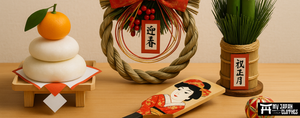
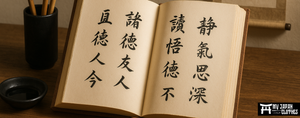
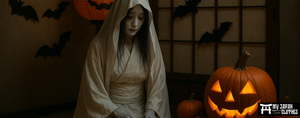
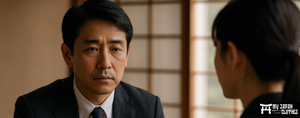
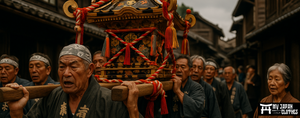
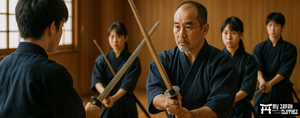


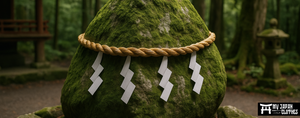
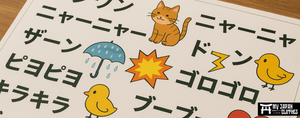
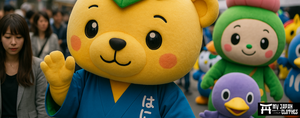
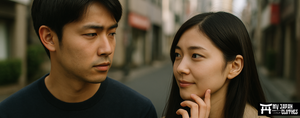
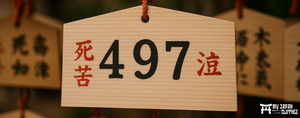
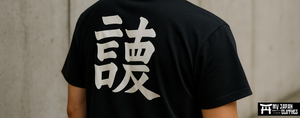
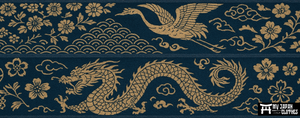
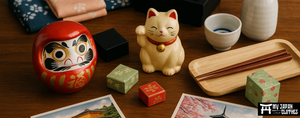
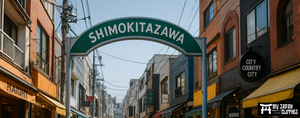



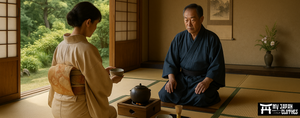
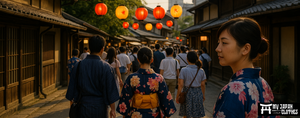
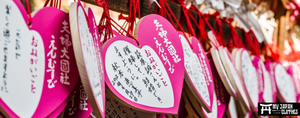
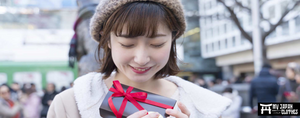
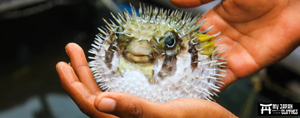
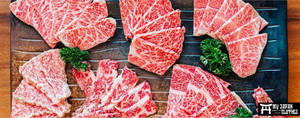
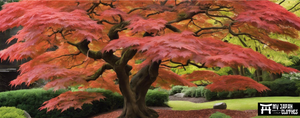
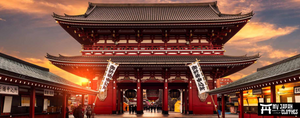
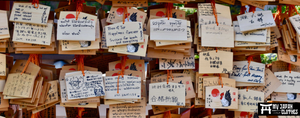
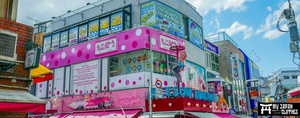
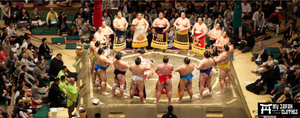







Leave a comment